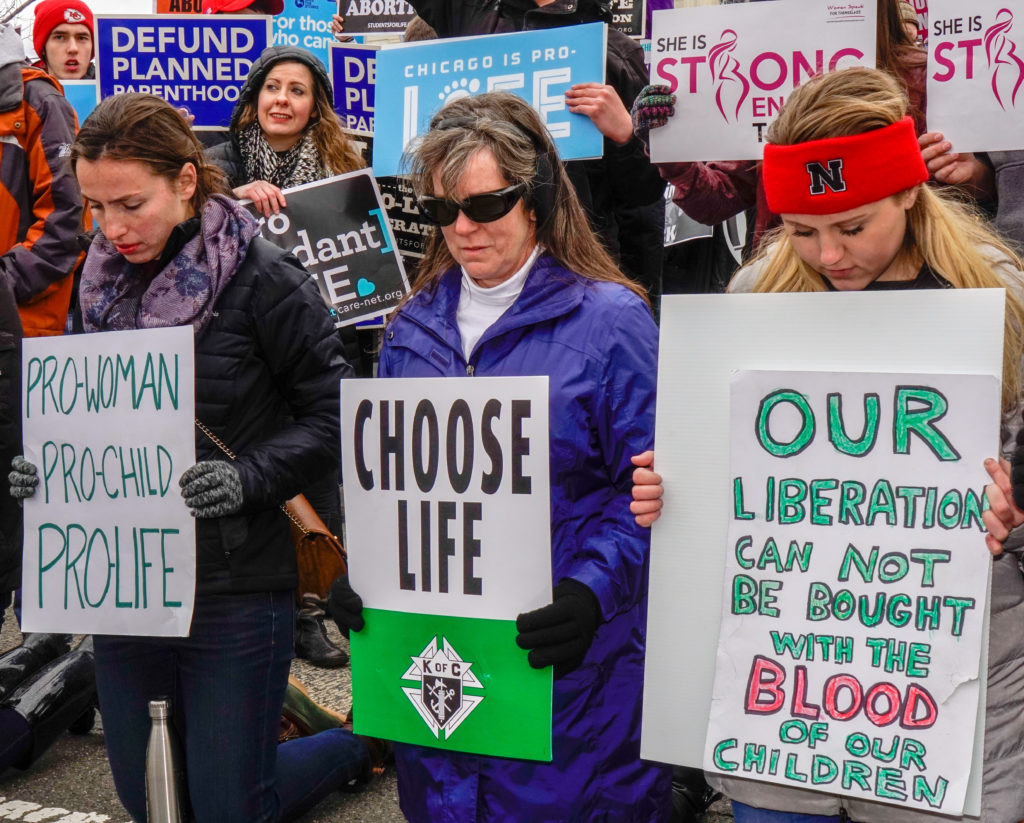
Published November 1, 2021
The Supreme Court hears oral arguments starting today, Nov. 1, on the constitutionality of a recent Texas law banning abortions after a fetal heartbeat is detectable, once again bringing the question of legal abortion to the fore of U.S. politics. A month from now, the court is scheduled to hear oral arguments on Dec. 1 in a Mississippi case with clear parallels to the Texas dispute: The Mississippi law under review prohibits most abortions after 15 weeks. Should the Supreme Court uphold the constitutionality of one or both laws, warn advocates for legal abortion, it would represent a significant rollback of women’s rights in the United States.
But have the Supreme Court’s landmark rulings on legal abortion—from Roe v. Wade (1973) through Planned Parenthood v. Casey (1992)—led to greater equality or liberty for women? Or has the opposite been true?
Despite the attention given to equality arguments for abortion rights in the years before Roe v. Wade and in the decades since, the U.S. Supreme Court has never held that abortion restrictions violate the equal protection clause of the Constitution. Still, when the high court upheld Roe in Planned Parenthood v. Casey, the new and prevailing equality rationale for abortion rights seemed foremost in the minds of several of the justices.
In their plurality opinion for the court in Casey, Justices Sandra Day O’Connor, Anthony Kennedy and David Souter wrote that although they could not affirm that Roe was rightly decided, its “precedential force” required them to uphold the decision, albeit with substantial changes. The justices deemed that the country, over the intervening 19 years, had come to “rely” on the right bestowed in Roe as a centerpiece of women’s liberty and equality, whatever the Constitution said (or did not say) about the matter. This “reliance interest” is what gave Roe, according to the plurality, its “precedential force”:
For two decades of economic and social developments, people have organized intimate relationships and made choices that define their views of themselves and their places in society, in reliance on the availability of abortion in the event that contraception should fail. The ability of women to participate equally in the economic and social life of the Nation has been facilitated by their ability to control their reproductive lives.
But Casey, like Roe, was weakly reasoned as a constitutional matter. The court made use of “reliance interests” more as a metaphor than as a legal claim: such legal interests are generally employed in commercial or property disputes, not to describe sociological patterns. But even assuming the court’s societal reliance claim is true, such a sociological fact does not ensure the integrity of the constitutional decision. As the law professor Michael Stokes Paulsen observed in a Yale Law Journal article in 2002: “For ‘decades of economic and social developments,’ in vast regions of the nation, people organized personal relationships and defined their views of themselves” in reliance on the legal regime of segregation. So too with slavery: The entire Southern economic system had “relied upon” slave owners’ putative “property rights” for its economic and social development. That they did so rely does not transform their (deplorable) legal claims into constitutional trumps, as we have so grievously learned. On its own, reliance is hardly a solid foundation for a constitutional claim.
[Listen to Erika Bachiochi on The Gloria Purvis Podcast]
Casey’s substantive claim as to women’s equality also lacks merit. Abundant evidence exists that there is a correlation between lower fertility rates and higher rates of education and labor force participation among women, but no evidence exists that abortion itself, rather than fertility regulation of various kinds, is specifically correlated with these (imperfect) markers of women’s equality. Instead, societal reliance on widespread contraceptive use with abortion as a “backup” may actually have had distorting, detrimental effects upon women and women’s equality, most notably among the poor.
A revolution in risk-taking
Rather than merely offer a fail-safe in individual cases “in the event that contraception should fail,” the easy abortion access granted in Roe seems instead to have inspired a large-scale, societal-wide increase in sexual risk-taking on the part of sexual actors. Dr. Alan Guttmacher, then president of Planned Parenthood, was prescient in this regard when in 1968 he said: “When an abortion is easily obtainable, contraception is neither actively nor diligently used.” But easy abortion access does not only tend to disincentivize contraceptive use. By offering sexual partners the false confidence that their acts will be definitively sterile, the abortion-backed contraceptive revolution ushered in an unprecedented mentality of risk-taking that is often unwarranted by the couple’s level of commitment and their ability to assume parental duties in the case of unexpected pregnancy. Over time, increases in such risk-taking, coupled with the failure, misuse or nonuse of contraceptives led to dramatic increases in abortion and nonmarital childbearing overall.
Richard Posner in 1994 described the unintended consequences the United States experienced in the decades after Roe thus: “If abortion is cheap…intercourse will be more frequent and…may generate more unwanted pregnancies, not all of which will be aborted. This should help us to understand the combination of cheap contraceptives, frequent abortions, and yet a high rate of unwanted births in our society.” Were abortion less readily available, economists suggest that contraceptive use (and greater avoidance of sexual intercourse) would increase and that the rate of unintended pregnancy, abortion and even single motherhood would likely decrease (though never to a vanishing point, of course).
In practice, then, the sexual insurance policy of the 1970s, putatively taken out to insure both sexes against childbearing, in reality seems to insure primarily men. Not only were the new abortion-backed contraceptive provisions the chief catalysts in erecting casual norms around sex, norms that are increasingly disfavored by most women. In addition, the still high rates of unintentional pregnancy, nonmarital births and abortion that accompany the new sexual insurance scheme disproportionately affect women, especially those who are poor. The now common mentality that sex has no consequences and thus entails no responsibilities too often leaves women alone with their pregnancies—to procure abortions or rear their children on their own.
Just as the 18th-century British philosopher Mary Wollstonecraft and the 19th-century women’s advocates anticipated, relatively easy access to abortion has relieved men of the mutual responsibilities that accompany sex, and so has upended the duties of care for dependent children that fathers ought equally to share. Sexual intercourse and potential motherhood remain an unshakable biological reality, but the connection between sexual intercourse and potential fatherhood—the connection that irresponsible men have always sought to avoid—has withered even further since Roe. Here again, Guttmacher of Planned Parenthood’s saw the consequences all too clearly in the years before the Supreme Court’s fateful decision in 1973: “Abortion on demand relieves the [man] of all possible responsibility; he simply becomes a coital animal.”
Indeed, if the institutionalized male sexual prerogative was finally undone by legal reforms to marriage and criminal law in the last century, relatively easy abortion access has emboldened men to reclaim that prerogative once again. As the #MeToo movement has revealed in spades, the new “coital animal”—lacking the formative schooling of desire expected of an aspiring gentleman—will not so readily heed the word “no.”
A decade of questions
The 1960s and 70s were decades awash in new questions that emerged with the revolutionary release of the birth control pill alongside women’s increased social status and the unprecedented entry of mothers of young children into the workforce. As the distinctive women’s movement moved apace, alongside both the population control movement and the emerging sexual revolution, but not yet together, Americans had before them a new set of yet unforeseen and entangled questions: first, how to enable women to participate more fully in the public sphere; second, how to manage the significant “technology shock” created by the advent of the pill (far more effective than its predecessors, but importantly not 100 percent so); and third, how to maintain utmost societal concern for the perennial need to nurture dependent children who heretofore had been the primary responsibility of their mothers.
The Supreme Court in 1973 chose one definitive route, short-circuiting the impassioned debates going on across the country in state after state, and thereby frustrating not only a better compromise among contending perspectives. It also thwarted more humane and creative cultural responses to the asymmetries that naturally exist, and socially persist, because of women’s disproportionate role in human reproduction. The court in 1992 then doubled down on this particular response in Casey, explicitly acknowledging that over the course of nearly two decades, the country and its actors had come to “rely” upon abortion for women’s equal participation in public life.
It may be that when the justices in Caseymaintained that “an entire generation has come of age free to assume Roe’s concept of liberty in defining the capacity of women to act in society,” it was an altogether accurate description. When Casey reaffirmed the “right to choose” abortion, employers and other public institutions remained “free” to be unchanged by women’s participation in them. In the words of the pro-choice law professor Deborah Dinner: “The discourse of reproductive choice continues to legitimate workplace structures modeled on the masculine ideal [with no caregiving responsibilities] as well as social policies that provide inadequate public support for families.”
That is, relatively easy abortion access has made it unnecessary for businesses and other institutions in the United States to acknowledge an essential cultural reality: Most working persons are (or ought to be) deeply encumbered by their obligations to their families. In the end, it may just be that an unmitigated right to abortion serves a profit-driven market above all else. But caring for dependents and participating in the economic and social life of the nation need not be a zero-sum game: only our lack of imagination, and our culture-wide capitulation to the now reigning logic of the market, has made it so.
Given the centrality of abortion rights in the feminist movement today, it is no surprise that work–family balance remains such a pressing issue, and that it is women’s status as mothers, not their status as women, that causes the greatest inequities socially and professionally, even as women have made remarkable gains overall. If the “gender revolution” has stalled—elevating women in the workplace without a concomitant elevation for the work mothers and fathers do in the home—constitutionalizing the right to abortion shares a good deal of the blame.
Erika Bachiochi is a fellow at the Ethics and Public Policy Center in Washington, D.C. This essay is adapted from her new book, The Rights of Women: Reclaiming a Lost Vision (Notre Dame University Press).
EPPC Fellow Erika Bachiochi is a legal scholar specializing in Equal Protection jurisprudence, feminist legal theory, Catholic social teaching, and sexual ethics. She is also a Senior Fellow at the Abigail Adams Institute in Cambridge, MA, where she founded and directs the Wollstonecraft Project. Her newest book, The Rights of Women: Reclaiming a Lost Vision, was published by Notre Dame University Press in 2021.








